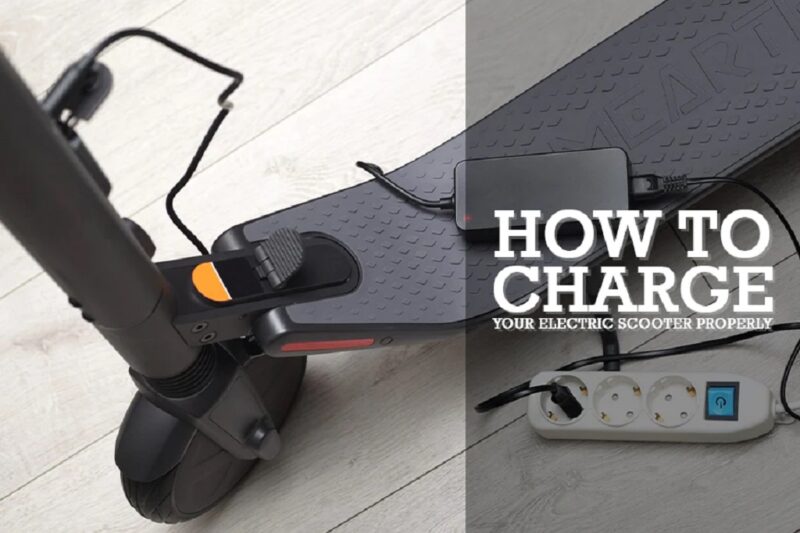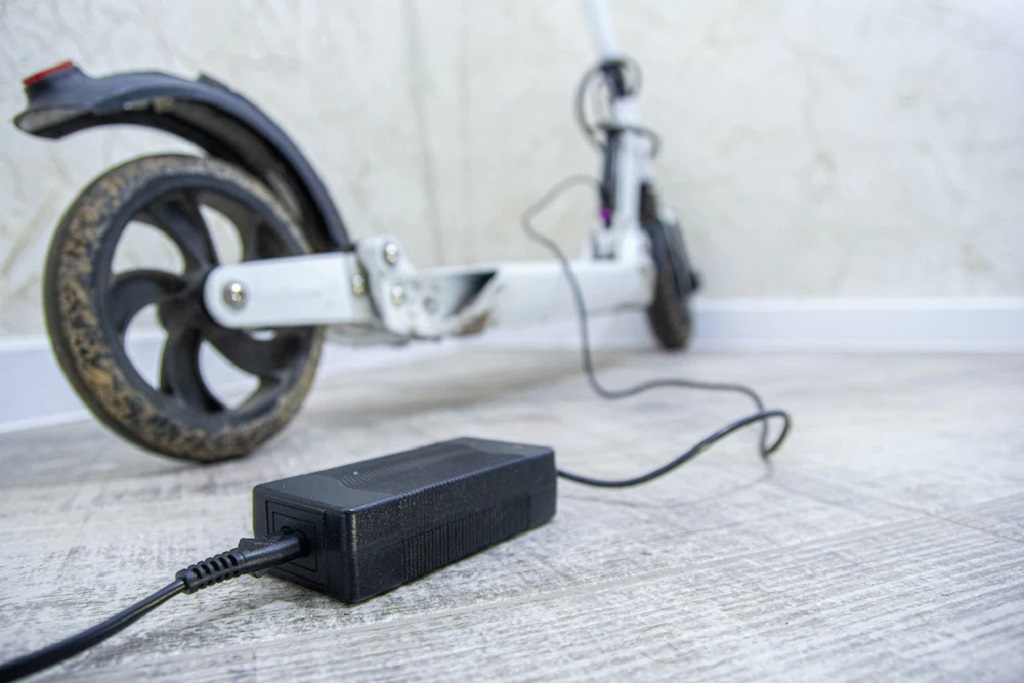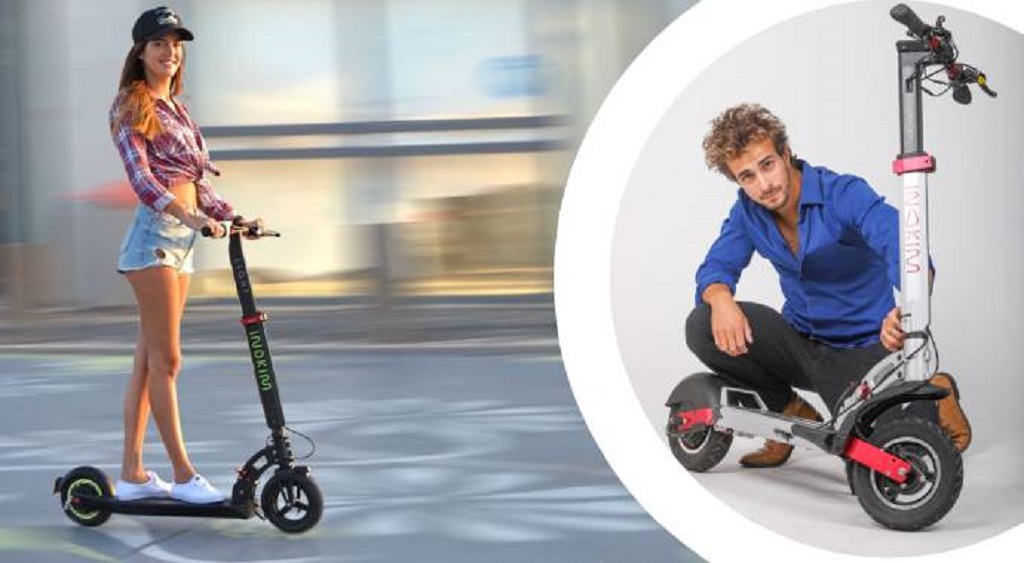To charge an electric scooter, plug the charger into an electrical outlet and connect it to the scooter’s charging port using the provided cable. Once connected, allow the scooter to charge until the battery is full.
Electric scooters are becoming an increasingly popular mode of transportation due to their eco-friendly nature and convenience. However, like any electronic device, these scooters require regular charging to ensure optimal performance. Knowing how to charge an electric scooter correctly is essential for getting the most out of your ride.
We will provide a concise guide on how to charge an electric scooter, covering the necessary steps to charge the battery and maximize its lifespan effectively. By following these simple instructions, you can ensure your electric scooter is always ready to hit the road without any hassle.
1. Choose The Right Charging Equipment
Charging an electric scooter properly is essential for maintaining its battery life and maximizing its performance. To ensure you charge your electric scooter correctly, you need to choose the right charging equipment. Here are a few important considerations when it comes to selecting the correct charger:
Selecting The Correct Charger
When choosing a charger for your electric scooter, as emphasized in https://localadvertisingjournal.com/, it’s crucial to opt for one that is compatible with your scooter’s battery specifications. Different electric scooters have different battery types, capacities, and voltages, so using the wrong charger can potentially damage the battery or even pose a safety risk.
Refer to your scooter’s user manual or manufacturer’s website to identify the specific charging requirements. Look for information on the battery type, voltage, and recommended amperage. Once you have this information, you can start searching for a charger that meets those specifications.
Here are a few key features to consider:
- Battery type: Ensure the charger is designed for the same type of battery as your electric scooter, such as lithium-ion or lead-acid.
- Voltage: The charger’s output voltage should match the voltage required by your scooter’s battery. Using a charger with a higher voltage can damage the battery, while using one with a lower voltage may lead to insufficient charging.
- Amperage: The amperage of the charger determines how quickly your scooter’s battery can charge. It’s vital to use a charger with the manufacturer-recommended amperage to avoid overcharging or undercharging.
- Connector: Check if the charger’s connector is compatible with the charging port on your electric scooter. Some scooters utilize proprietary connectors, so it’s essential to ensure compatibility.
- Certifications and safety features: Look for chargers with appropriate safety certifications, such as UL or CE, to ensure they meet safety standards. Additionally, features like overcharge protection and short circuit protection are valuable for preventing battery damage.
Using The Manufacturer-recommended Charger
Manufacturers often recommend using their own branded chargers for their electric scooters, including those designed as electric scooters for heavy adults. These chargers are specifically designed to match the scooter’s battery requirements, ensuring optimal charging performance and battery life. It is generally advisable to use the manufacturer-recommended charger whenever possible.
Using a third-party charger may seem convenient or cost-effective, but it can carry the risk of incompatibility or even damage to the scooter’s battery. Additionally, third-party chargers may not come with the same level of safety certifications, potentially compromising safety.
Always aim to use the charger recommended by the manufacturer to maintain the integrity of your electric scooter’s battery and prolong its lifespan.
2. Optimal Charging Practices
When it comes to charging your electric scooter, there are optimal practices that can help prolong its battery life and overall performance. By following these guidelines, you can ensure that your electric scooter remains efficient and ready to ride whenever you need it.
Avoiding Overcharging
Overcharging is one of the common mistakes that can negatively impact the battery life of your electric scooter. Leaving your scooter plugged in for an extended period can cause the battery to overheat and degrade faster. To avoid overcharging, you should:
- Disconnect your electric scooter from the charger once it reaches a full charge.
- Avoid leaving it plugged in overnight or for prolonged periods.
- Set a reminder or use a smart plug with a timer to automatically disconnect the charger once it’s fully charged.
Charging At Moderate Temperatures
Extreme temperatures can affect the charging process and the overall health of the battery. It is best to charge your electric scooter at moderate temperatures to optimize its performance. Here’s what you can do:
- Avoid charging your scooter in extremely hot or cold environments, as it can damage the battery.
- For the best charging results, find a location with a temperature between 50°F and 80°F (10°C and 27°C).
- If the weather is too hot or cold, consider charging your scooter indoors where the temperature is more controlled.
By adhering to these optimal charging practices, you can extend the lifespan of your electric scooter’s battery and ensure that it performs at its best. Remember to avoid overcharging and charge at moderate temperatures for the best results.
3. Battery Maintenance And Care
Keeping The Battery Clean
Ensuring that the electric scooter’s battery remains clean is crucial for its optimal performance and longevity. Regularly cleaning the battery using a soft, dry cloth can help remove any dust, dirt, or debris that may have accumulated. Additionally, it’s important to avoid using any harsh chemicals or abrasive materials when cleaning the battery, as these can cause damage to the battery’s exterior and affect its performance.
Regular Inspections For Wear And Tear
Regular inspections are essential to identify any signs of wear and tear on the battery. This includes checking for any cracks, leaks, or corrosion on the battery casing. Inspecting the wiring and connections for any signs of damage or loose connections is also vital. These regular checks can help in the early identification of any potential issues and prevent further damage to the battery.
4. Best Storage Practices
To ensure the longevity of your electric scooter’s battery, it’s best to store it at a moderate temperature, ideally between 20-25 degrees Celsius. Keeping the battery at around 50% charge and avoiding prolonged periods of inactivity can also help maintain its health and performance.
Regularly charging and discharging the battery can prevent capacity loss and prolong its lifespan.
Proper storage of your electric scooter can significantly extend its lifespan and ensure it remains in optimal condition for years to come. Follow these best storage practices to safeguard your investment and enjoy a reliable and efficient ride whenever you hop back on your scooter.
Storing At Ideal Charge Levels
One crucial aspect of storing your electric scooter is to ensure it is at an ideal charge level. Avoid storing your scooter with a fully depleted battery, as this can lead to irreversible damage to the battery cells. On the other hand, storing your scooter with a fully charged battery for an extended period is also not recommended since it can strain the cells and reduce their overall lifespan.
Instead, aim to store your electric scooter with a charge level between 30% and 50%. This range provides sufficient power to keep the battery active without subjecting it to excessive stress. Before storing, make sure to check your scooter’s user manual for specific manufacturer recommendations regarding optimal charge levels for storage.
Long-term Storage Considerations
If you anticipate storing your electric scooter for an extended period, such as during the winter season or for several months, there are a few additional considerations to keep in mind:
- Choose the Right Location: Store your electric scooter in a cool, dry place away from extreme temperatures and humidity. Ideally, it should be sheltered from direct sunlight and protected from potential water damage.
- Remove the Battery: If possible, remove the battery from your electric scooter before storing it. This step helps prevent self-discharge and protects the battery from temperature fluctuations. Store the battery separately in a cool and dry area.
- Maintain Regular Charging: While in long-term storage, it’s essential to periodically charge your battery. Doing so helps prevent it from fully draining and maintains its health. Check the user manual for the recommended charging interval during storage periods.
- Inspect and Clean: Before storing your electric scooter, conduct a thorough inspection to ensure all parts are in good condition. Clean your scooter to remove any dirt or debris that could potentially damage its components during storage.
By following these best storage practices, you can ensure your electric scooter remains in top-notch condition during periods of non-use. This way, when you’re ready to hit the road again, your scooter will be raring to go without any hiccups or headaches.
5. Maximizing Battery Life During Use
Efficient riding techniques and eco-friendly practices are essential in maximizing the battery life of your electric scooter. By adopting these habits, you can ensure that your scooter battery lasts longer and allows for longer rides before needing a recharge.
Efficient Riding Techniques
Efficient riding techniques help conserve battery power and extend the overall range of your electric scooter. Here are some tips to keep in mind:
- Avoid unnecessary stops and starts. Gradually accelerate and decelerate to reduce energy consumption.
- Utilize the scooter’s momentum whenever possible. Maintain a steady speed to optimize battery usage.
- Choose the most efficient route. Plan your journey to avoid steep inclines, rough terrains, or congested areas that may drain the battery quickly.
- Reduce the scooter’s weight. Consider carrying only essential items, as additional weight can negatively impact battery life.
- Optimize tire pressure. Keep the tires properly inflated to reduce rolling resistance, which can improve overall efficiency.
Eco-friendly Riding Practices
Adopting eco-friendly riding practices not only benefits the environment but also helps in maximizing your electric scooter’s battery life. Here’s how you can contribute:
- Avoid aggressive acceleration and braking. Smooth and gradual movements consume less energy, reducing the strain on the battery.
- Take advantage of the scooter’s regenerative braking feature, if available. Regenerative braking helps in recovering energy during the braking process, which can be redirected back to the battery.
- Opt for lower speed settings when possible. Lower speeds tend to be more energy-efficient, allowing the battery to last longer.
- Consider pedaling or using manual power on scooters with pedal-assist options. This reduces the reliance on battery power and allows for a longer ride before recharging.
- Make use of dedicated bike lanes or paths to minimize traffic congestion and the need to frequently stop and start.
- Turn off unnecessary electronics or lights on your scooter when not in use. This helps conserve battery power for more extended rides.
By incorporating these efficient riding techniques and eco-friendly practices into your electric scooter rides, you can enjoy longer battery life, more extended distances, and a greener mode of transportation!
Frequently Asked Questions On How To Charge Electric Scooter
How Do I Charge An Electric Scooter?
To charge an electric scooter, simply plug the charger into an electrical outlet and connect it to the scooter’s charging port. Once plugged in, the scooter will start receiving power and the battery will begin to charge. Be sure to use the correct charger that came with your scooter to avoid damaging the battery.
How Long Does It Take To Charge An Electric Scooter?
The charging time for an electric scooter varies depending on the scooter model and battery capacity. Typically, it takes around 4-8 hours to fully charge the battery. Refer to your scooter’s manual for specific charging time recommendations and avoid overcharging, as it can reduce battery lifespan.
Can I Charge My Electric Scooter Overnight?
Yes, you can charge your electric scooter overnight. Most electric scooters have built-in safety features that prevent overcharging. However, it’s recommended to unplug the charger once the battery is fully charged as a precautionary measure. Always follow the manufacturer’s guidelines and precautions to ensure proper and safe charging.
Conclusion
Charging your electric scooter is a simple process that can prolong your scooter’s battery life and help you save on energy costs. By following the manufacturer’s guidelines and utilizing the appropriate charging equipment,By embracing the experience of riding an electric bike, not only can you revel in the joy of efficient and eco-friendly transportation, but you can also ensure optimal performance from your scooter and contribute to a more sustainable environment. Embrace the convenience and eco-friendly benefits of owning an electric scooter today.



